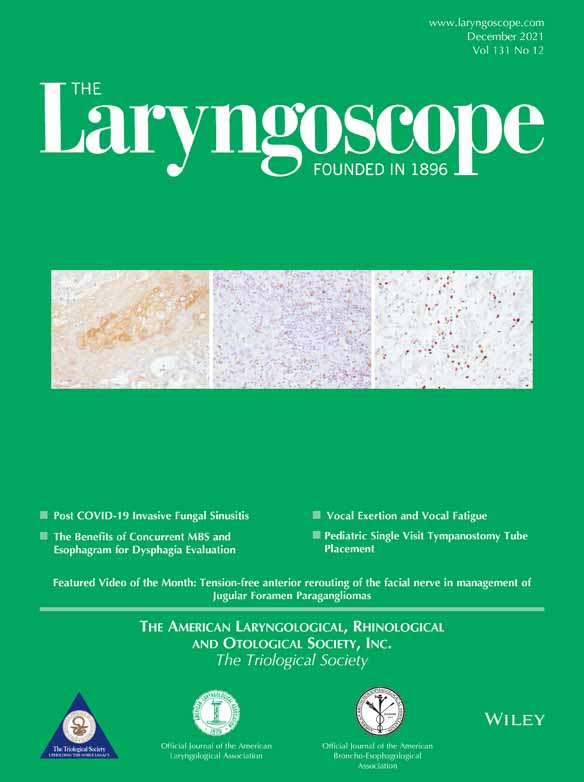Modeling Recurrence in Idiopathic Subglottic Stenosis With Mobile Peak Expiratory Flow
Editor's Note: This Manuscript was accepted for publication on July 9, 2021.
North American Airway Collaborative (NoAAC) collaborators are listed in Acknowledgments section.
Group information: Members of the North American Airway Collaborative PR02 Study group.
The authors have no funding, financial relationships, or conflicts of interest to disclose.
Abstract
Objectives/Hypothesis
We sought to establish normative peak expiratory flow (PEF) data for patients with idiopathic subglottic stenosis (iSGS), evaluate whether immediate changes in PEF after a procedure predict long-term treatment response, and test if a decline in longitudinal PEF is associated with disease recurrence.
Study Design
International, prospective, 3-year multicenter cohort study of 810 patients with untreated, newly diagnosed, or previously treated iSGS.
Methods
iSGS patients consented and enrolled in the North American Airway Collaborative (NoAAC) iSGS1000 cohort recorded PEF data on a mobile smartphone app. Cox regression tested the associations between the magnitude of postoperative PEF improvement and longitudinal 90-day PEF decline with the risk of disease recurrence.
Results
Within the NoAAC iSGS1000 cohort, 810 patients participated in a 3-year prospective study comparing surgical treatment efficacy and 385 had appropriate PEF measurements and follow-up data. Of those patients, 42% (161/385) required at least one operation during study follow-up. The mean PEF preceding operative intervention was 241 L/min (95% confidence interval [CI]: 120–380) corresponding to a predicted PEF of 52%. The mean increase in PEF following a procedure was 111 L/min (95% CI: 96–125 L/min). Interestingly, the magnitude of immediate PEF improvement was not predictive of disease recurrence (hazard ratio [HR] for 100 L/min increase = 0.90, 95% CI: 0.60–1.00). However, recurrence was associated with the magnitude of PEF decline over 90 days (30% vs. 10% decline, HR = 2.2, 95% CI: 1.5–3.0).
Conclusions
We provide normative PEF data on a large iSGS patient cohort. The degree of PEF improvement immediately after surgery was not associated with a longer procedure-free interval. However, a 30% decline in PEF over 90 days was associated with elevated risk of disease recurrence.
Level of Evidence
2 Laryngoscope, 131:E2841–E2848, 2021




